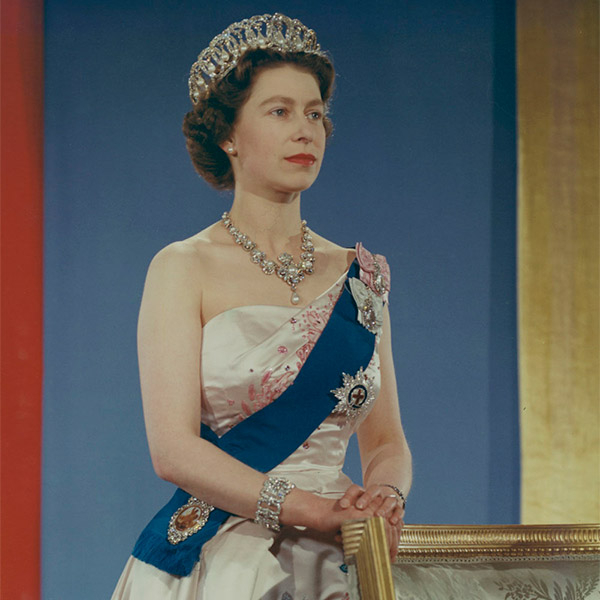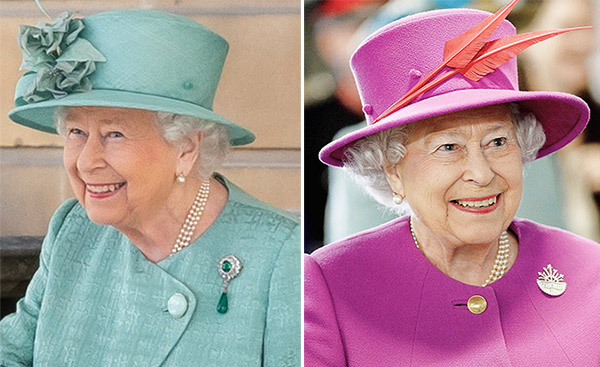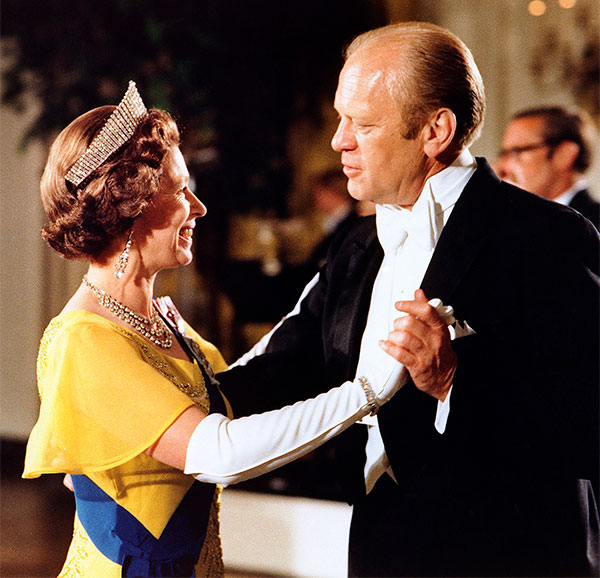
As the longest-reigning British monarch in history, Queen Elizabeth II, who passed away on Sept. 8, will no doubt be remembered for innumerable things beyond her contributions as Britain’s head of state and Commonwealth: corgis, horses, and hats. A fondness for Easter-egg pastels. Her stalwart response to scandal after scandal. Her role as Grannie to a complex passel of grands and greats.
But after the initial twinge of losing an icon—and perhaps pausing to reflect on the long-term effects of British colonialism—the minds of most jewelry lovers will have turned to her majesty’s dragon’s lair of more than 50 glittering tiaras and hundreds of other gem-encrusted ornaments.
“While a lot of pieces in the royal collection are mired in controversy, such as the 105.6 carat Koh-i-Noor diamond, which is part of the crown jewels and which India wants back, the queen also had a 300-strong private collection giving us more of an insight into her personal style,” says noted British jewelry journalist, author, and curator Melanie C. Grant. “Brooches featured heavily, usually set with diamonds or sometimes pearls. I always think fondly of her Grima brooch, with its carved ruby set in textured gold, given to her by Prince Philip in 1966. If there is a legacy jewel, this brooch is surely it. “
And what will the entirety of her bejeweled legacy be? You have only to close your eyes and imagine the queen the last time you saw her in a photo. As this Vanity Fair article notes, the queen “had a simple formula when it came to accessorizing—a simple pearl necklace, a brooch on the lapel, and her diamond engagement ring.”
The queen was faithful to the pearls-and-brooch combo throughout her 70-year reign: It appears in countless photographs, from her engagement to Prince Phillip in 1947 to the birth of now–King Charles III in 1949 to the weddings of her grandchildren.
They are items befitting of a modern-day monarch. The omnipresence of a diamond or gemstone brooch (or two) hearkened the insignias, badges, and medals worn by her forebears. Pearls, too, have had a long-standing association with royalty, who at one time were the only ones who could afford to wear them. Queen Elizabeth’s mother and grandmother were likewise fond of wearing pearls, so there may be some sentimentality built in to the decision to wear them as she did.

And both types of jewels rather splendidly aligned with midcentury fashion and jewelry trends as well. It’s also quite possible she was setting the trends, inspiring our grandmothers and great-grandmothers to follow her lead.
Still, The Adventurine‘s Marion Fasel speculates that Queen Elizabeth II’s jewelry legacy will be very different from, say, Queen Victoria’s, whose impact on jewelry trends (see: charms and opals) is referenced frequently to this day.
For our most recent queen, “all of the jewels were a reflection of the office and her position,” Fasel says. “It wasn’t something that was as trend-driven as her great-great-grandmother, but it certainly was a constant celebration of jewelry. She always—as in every working day in public—wore important brooches, one of several pearl necklaces and pearl earrings. For evening occasions, the queen had a more-is-more approach. She wore tiaras, earrings, necklaces, and bracelets. She kept the tradition of wearing gloves, so we never really saw that many rings.”

In addition to the more-is-more approach (which Fasel believes will be upheld by Queen Consort Camilla), there is this notion that she found a formula that worked and never strayed from it, effectively transforming her jewels into something as intrinsic to who she was as her perfected smile and that bemused twinkle in her eye that seemed to deepen with age.
As Queen Elizabeth II grew as a ruler, a mother, and a style icon, the double and triple strands of pearls accompanied her on this journey like a flight of angels. She is seen wearing a double strand in her official Platinum Jubilee photograph by Ranald Mackechnie, taken earlier this year. No brooch this time, or a tiara, perhaps a signal that she wanted to be remembered as the woman who was called Lilibet as a girl, more matriarch than monarch.
The only time Queen Elizabeth II did not break out the pearls for a major event was for her coronation in 1953. That was a headpiece-driven affair: The Imperial State Crown was originally made for King George VI in 1937 by British jeweler Garrard, which has made many headpieces for the royal family throughout its nearly 3000-year history. The venerable firm was not able to comply with our request for comment on her majesty’s legacy in terms of the jewelry she favored, but in this Instagram post, CEO Joanne Milner described her as “a truly global icon.”
The other coronation tiara was the Diamond Diadem, set with rows of pearls and 1,222 brilliant-cut diamonds, a favorite the queen would return to again and again (as recently as 2019, for the opening of Parliament). It appears in an official coronation portrait painted by Sir Herbert James Gun, and there are also iconic Cecil Beaton photographs documenting the event in which she is seen wearing both the Diamond Diadem and the Imperial State Crown.
For in-depth coverage of Queen Elizabeth II’s jewelry journey, check out The Court Jeweller, which is delivering a play-by-play of her greatest hits. Meanwhile, some might ask if this this writer has a favorite Queen Elizabeth II moment. The answer is yes.
Top: Official portrait of Queen Elizabeth II before the start of her 1959 tour of the United States and Canada as Queen of Canada. She wears a pink dress with the Vladimir Tiara, the Queen Victoria Golden Jubilee Necklace, the blue Garter Riband, Badge, and Garter Star, and the Royal Family Orders of King George V and King George VI (photo: Library and Archives Canada).
Follow me on Instagram: @aelliott718
Follow JCK on Instagram: @jckmagazineFollow JCK on Twitter: @jckmagazine
Follow JCK on Facebook: @jckmagazine






